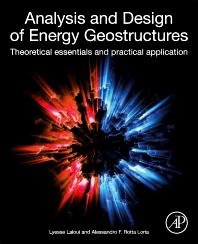EPFL champions energy geostructures

Professor Lyesse Laloui heads at l'EPFL the Soil Mechanics Laboratory at EPFL. ©Alain Herzog/EPFL
Energy geostructures provide a constant source of renewable heating and cooling in buildings and infrastructures and perform very well. Professor Lyesse Laloui, the director of EPFL’s Laboratory of Soil Mechanics (LMS), has co-authored a new book that takes stock of the latest developments in a field where Lausanne leads the way globally.
Researchers at EPFL have spent the past 25 years studying energy geostructures – a method that uses the earth’s natural warmth to heat and cool buildings and infrastructures. Yet for all its benefits, the technology has yet to catch on: only around 1,000 buildings worldwide are fitted with energy geostructures, and 40 of them are in Switzerland. Here, we talk to Professor Laloui, the co-author of a new book that provides an in-depth look at the subject. The other co-author is Alessandro Rotta Loria, a former PhD student at EPFL and now an assistant professor at Northwestern University in the United States.
What are energy geostructures?
Energy geostructures are heat exchangers installed in new building and infrastructures. They use the constant temperature of the earth’s core to heat and cool a single structure or a group of neighboring structures. The idea is simple: heat is drawn from the ground to warm a building, and injected back into the ground to cool it. Energy geostructures are also incredibly easy to fit; all it takes is a few plastic pipes laid in the building’s foundations, with no extra drilling needed, plus a heat pump with a lifespan of 15–20 years. Once installed, the system provides a constant, reliable, renewable source of heating and cooling – meeting between 60% and 80% of a building’s energy needs. And unlike solar panels, they work around the clock and don’t rely on the vagaries of the weather.
In the introduction to your book, you argue that the technology’s time has come.
The idea itself dates back to Roman times. Yet there were still huge gaps in scientific understanding when our lab began working on energy geostructures in the 1990s. What’s more, their potential remained unclear because the practice at the time favored cheaper energy sources. Back then, we saw the matter first and foremost as a scientific challenge. But as generations of young researchers have passed through our lab, we’ve gained a clearer scientific picture of how to capture this free source of underground heat, how to connect it to a building, and how to use it as efficiently as possible.
Meanwhile, the world has changed.
In 2020, laws will take effect in Europe and the United States requiring all new buildings to generate their own energy on site. Google, for example, has just fitted the technology to its new research center in California. This new landscape holds great promise for everyone working in our field – especially at EPFL, where our understanding of energy geostructures has advanced by leaps and bounds in the past 25 years. For instance, we’ve just patented geothermal panels – a system that works much like solar panels and can be fitted to existing buildings.
Who is your book aimed at?
The book, which I teamed up with Alessandro Rotta Loria to write, draws on previous scientific articles, as well as on PhD and postdoctoral research at my lab. Much of that work was funded by the Swiss Federal Office of Energy, the Swiss National Science Foundation and various European projects. It also builds on the content of two courses: a Master’s-level class in civil engineering that EPFL launched three years ago, and a joint University of Lausanne and EPFL continuing education class I give on the same subject. EPFL is currently the only university in the world with a specialization in energy geostructures. The book covers the theory behind the technology and shows how to deploy it. We wrote the book because we wanted to promote energy geostructures by sharing our expertise with other universities, as well as with practitioners and authorities. Our hope is that, eventually, energy geostructures will become as widespread as solar panels are today. The publication also underscores EPFL’s unique expertise – and its ambition to become a global leader in the field.
